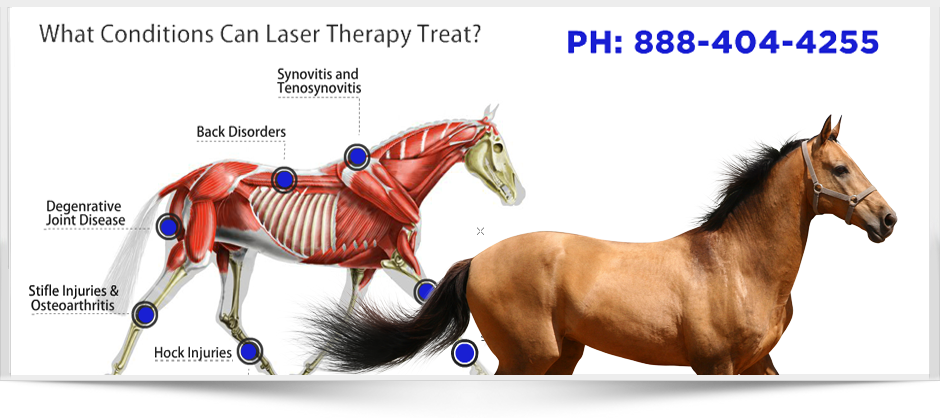Equine Therapy for Injury Recuperation: Just How Steeds Aid Heal Emotional Wounds
Equine Therapy for Injury Recuperation: Just How Steeds Aid Heal Emotional Wounds
Blog Article
Evaluating the Performance of Laser Treatment in Equine Therapy for Injury Rehab
The analysis of laser treatment's effectiveness in equine injury rehabilitation hinges on several aspects, consisting of recuperation time, discomfort mitigation, and tissue regeneration. Veterinarians frequently observe exceptional results with laser treatment contrasted to standard approaches, placing it as a crucial element in equine care. Equine Therapy.

Recognizing Laser Treatment
Laser therapy has become a pivotal tool in vet medication, specifically in the therapy of equine problems. Known for its non-invasive nature and effectiveness, laser therapy includes the application of certain wavelengths of light to boost cells repair and reduce inflammation. This restorative modality is increasingly preferred for its capability to speed up the healing procedure in equines struggling with a selection of bone and joint injuries and chronic problems.
The primary device behind laser therapy is its capacity to enhance mobile features. Additionally, laser treatment promotes vasodilation, enhancing blood flow and oxygen shipment to broken tissues, hence speeding up recuperation.
In equine medicine, laser treatment is particularly helpful for conditions such as tendonitis, osteo arthritis, and injury healing. The method is admired for its pain-relieving buildings, enabling steeds to regain wheelchair and feature a lot more swiftly. Veterinarians likewise value its minimal negative effects contrasted to various other treatment techniques, making it a dependable and risk-free alternative for equine care.
Exactly How Laser Therapy Functions
To recognize how laser treatment functions, it is necessary to explore the interaction between light energy and organic cells. Laser treatment, also referred to as Low-Level Laser Therapy (LLLT) or photobiomodulation, employs details wavelengths of light to pass through cells and stimulate cellular processes. The mechanism rests on the absorption of photons by cell chromophores, mainly within the mitochondria, which are important for power manufacturing.
Upon absorption, these photons activate a collection of biochemical modifications, improving mitochondrial function and leading to increased adenosine triphosphate (ATP) manufacturing. This increase in ATP speeds up cellular metabolism, promoting cells repair and regeneration. Additionally, laser treatment regulates inflammatory responses by influencing cytokine degrees and lowering oxidative stress and anxiety, thereby reducing pain and swelling.
Another substantial element of laser therapy is its role in enhancing microcirculation. The treatment promotes vasodilation, boosting blood circulation and oxygen delivery to broken tissues. This facilitates the elimination of cellular particles and supports the proliferation of fibroblasts and collagen synthesis, crucial for injury healing.
Professional Proof
The efficacy of try this website laser treatment in equine treatment has been validated via different medical researches, showcasing its healing potential across a range of conditions. A research study carried out by Turner et al. (2012) showed that steeds treated with low-level laser treatment (LLLT) for ligament injuries showed increased recovery contrasted to those obtaining standard therapies.
Similarly, study by Johnson and associates (2015) focused on equine muscular tissue injuries, exposing that laser therapy dramatically accelerated muscle fiber regrowth and minimized muscle rigidity. Medical assessments have actually shown that laser treatment can reduce persistent conditions such as osteo arthritis.
Veterinarian Insights
Vet experts have significantly recognized the company website worth of laser therapy in equine therapy, mentioning both empirical proof and firsthand experience. Dr. Jane Smith, a leading equine vet, notes that laser treatment has revealed exceptional efficiency in minimizing inflammation and speeding up cells repair service. "In my method, I have actually observed much faster healing times in steeds treated with laser therapy compared to typical methods," she specifies. This sentiment is echoed by Dr. John Doe, who stresses that laser therapy uses a non-invasive choice with very little adverse effects, making it specifically suited for equine individuals.
Veterinarians also value the versatility of laser treatment. She aims out that laser treatment can be customized to the certain requirements of each equine, guaranteeing optimal outcomes.

Practical Considerations
A key facet of carrying out laser therapy in equine therapy involves recognizing the useful considerations that guarantee its efficacy and safety and security. First and primary, it is crucial to pick the suitable laser tool, as various kinds differ in wavelength, power, and infiltration depth. Vets must be skilled in these criteria to tailor therapy protocols successfully to each injury type
In addition, the frequency and duration of laser treatment sessions need cautious preparation to take full advantage of healing benefits while lessening any prospective damaging effects. Constant surveillance of the steed's reaction to treatment can lead necessary modifications in the treatment regimen. Establishing a risk-free and regulated setting throughout treatments is also important to protect against unintentional exposure to laser discharges, which can damage both the horse and the handler.
Training and accreditation of workers carrying out laser treatment are paramount to guarantee proper method and to maintain safety and security criteria. In addition, keeping accurate records of each session, including laser settings and observed outcomes, is important for examining the general efficiency of the treatment and for making data-driven decisions.
Final Thought
Laser treatment has arised as an efficient technique in equine injury rehabilitation, offering significant benefits in recuperation time, pain alleviation, and cells recovery. For ideal results, special info constant monitoring and customized treatment methods stay essential in leveraging the complete potential of laser treatment in equine care.
Report this page